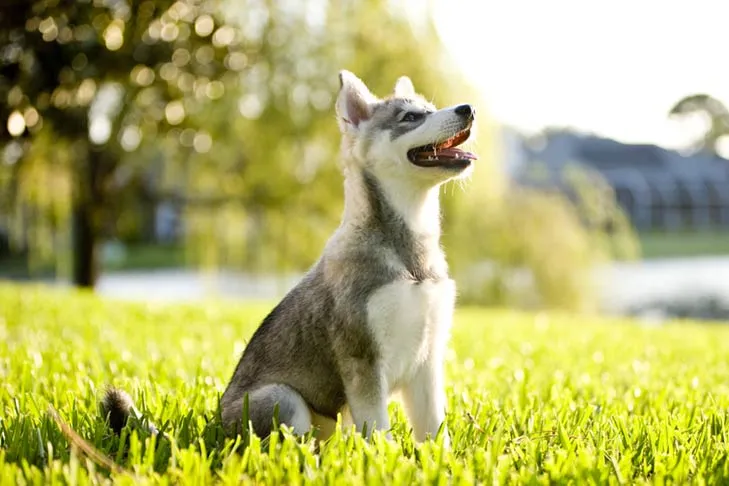Embarking on the journey of dog ownership is an incredibly rewarding experience, but it’s also one that requires commitment, patience, and a solid understanding of how to guide your canine companion. The foundation of a happy, harmonious life with your dog is built upon effective training, especially in the early stages. Teaching your dog the first things to teach a dog is crucial for establishing clear communication, fostering a strong bond, and ensuring their safety and your peace of mind. This guide will walk you through the essential early training steps, empowering you to nurture a well-behaved and confident dog.
One of the most effective approaches to dog training is positive reinforcement. This method focuses on rewarding desired behaviors, making learning an enjoyable experience for both you and your dog. Instead of punishment, which can lead to confusion and anxiety, positive reinforcement uses rewards your dog values – be it a tasty treat, enthusiastic praise, or a favorite toy – to encourage them to repeat good actions. Remember, your puppy is learning, and just as a young child wouldn’t be expected to perform complex tasks immediately, your dog needs time and clear guidance. Patience is your most valuable tool in this process.
When considering what to teach your dog first, focusing on a few core commands will lay a robust groundwork for all future training endeavors. These fundamental skills not only make daily life smoother but also prepare your dog for more advanced training or even competitive dog sports.
For those looking to expand their repertoire of commands beyond the basics, consider exploring cool easy tricks to teach your dog or even delve into unique dog tricks to teach your dog once the essential commands are mastered.
The Importance of Early Training
Starting training from the moment your puppy comes home, typically around eight weeks old, is paramount. Early training provides a sense of security for your puppy, as they learn what is expected of them. This clarity reduces anxiety and builds confidence. Keep training sessions short, ideally between five to ten minutes, and always aim to end on a positive note. If your puppy struggles with a new command, revisit a skill they’ve already mastered and reward them generously. This ensures they always end a session feeling successful and motivated. Pushing a dog too hard when they’re frustrated or bored will hinder their learning process.
 A curious Labrador puppy looking up expectantly
A curious Labrador puppy looking up expectantly
Teaching Your Dog to Come When Called (Recall)
A reliable recall is arguably one of the most critical skills for your dog’s safety. Teaching your dog to come when called, often referred to as “recall,” should begin in a quiet, enclosed space, like indoors, to minimize distractions.
- Initial Association: Start by sitting with your puppy. Say their name or the command “come” and immediately offer a treat. At this stage, they don’t need to move; the goal is to create a positive association with the word.
- Building the Connection: Progress to dropping a treat on the floor near you. As your puppy eats it, say their name again. When they look up, give them another treat.
- Increasing Distance: Gradually toss the treat a little further away. Your puppy will learn to turn towards you when they hear their name. It’s important to avoid repeating your puppy’s name if they don’t respond immediately, as this can teach them to ignore it. Instead, move closer to them and go back to a step where they can succeed.
- Adding Movement: Once your puppy reliably turns to you, introduce movement. Toss a treat and take a few quick steps away while calling their name. The chase will likely be fun for them!
- Positive Reinforcement: When your puppy reaches you, shower them with praise, more treats, or engage them with a favorite toy. Coming to you should always be a rewarding experience. Gradually increase the distance and practice in different, safe environments. When practicing outdoors, using a long leash can be helpful initially.
A crucial tip: When your puppy comes to you, avoid grabbing their collar immediately, as this can sometimes startle or confuse them. If your puppy is timid, kneel down, face them sideways, and offer treats as you approach.
Mastering Loose-Leash Walking
Teaching your dog to walk politely on a loose leash is essential for enjoyable walks. While “heel” in competitive obedience has specific requirements, for everyday walks, the goal is for your dog to walk beside you without pulling.
- Leash Familiarity: Ensure your puppy is comfortable wearing a leash. Some puppies may try to bite it. Consistently reward them with treats when you put the leash on.
- Positive Association at Your Side: Stand next to your puppy with a loose leash. Give them several treats in a row for simply being by your leg.
- Encouraging Movement: Take one step forward and encourage your puppy to follow with another treat as they catch up. Continue offering treats at knee or hip level as you walk.
- Redirecting Forward Pulling: If your puppy pulls ahead, simply turn in the opposite direction, call them to you, and reward them once they reach your side. Then, continue walking.
- Gradual Independence: Over time, gradually increase the distance between treats. Eventually, your dog will walk happily beside you without pulling. Remember to allow your dog ample time to explore and sniff during walks. When it’s time to move on, use a cheerful cue like “Let’s go!” and reward them for rejoining your side.
For puppies still learning, or for those who need extra guidance, exploring easy things to teach a dog can provide additional foundational skills that complement leash walking.
 An Alaskan Klee Kai puppy sitting patiently on grass ©Kablonk Micro – stock.adobe.com
An Alaskan Klee Kai puppy sitting patiently on grass ©Kablonk Micro – stock.adobe.com
Teaching the “Sit” Command
The “sit” command is fundamental and can be taught using two main methods: capturing or luring.
Capturing the Sit
- Observation: Stand in front of your puppy with a few treats. Wait patiently for them to naturally sit down.
- Reward and Mark: The moment they sit, say “yes” (or your chosen marker word) and immediately give them a treat.
- Encourage Repetition: Step back or to the side to encourage them to stand up, and then wait for them to sit again, rewarding each successful sit.
- Adding the Cue: After several repetitions, begin saying the word “sit” just as they start to lower themselves into the sitting position.
Luring the Sit
- Treat as a Lure: Hold a treat in front of your puppy’s nose.
- Guide the Movement: Slowly move the treat upwards and slightly over their head. As they follow the treat with their nose, they will naturally lower their rear end to sit.
- Reinforce the Sit: Give them the treat as soon as their bottom touches the ground.
- Hand Signal Practice: Repeat this process a couple of times with the treat. Then, practice the same hand motion without a treat, rewarding them with a treat from your other hand after they sit.
- Introduce the Verbal Cue: Once they reliably follow the hand signal, start saying “sit” just before you give the hand signal.
Crucially, never physically force your puppy into a sit. This can be confusing and upsetting for them.
Teaching the “Down” Command
The “down” command is similar to “sit” and can also be taught through capturing or luring.
Capturing the Down
- Patience in a Calm Environment: In a quiet, less stimulating environment (like a small room), wait for your dog to lie down naturally.
- Reward and Mark: As soon as they lie down, mark the behavior with your chosen word (“yes”) and give them a treat.
- Encourage Repetition: Provide a release cue (e.g., “up”) and a lure if necessary to get them to stand again. Then, wait for them to lie down.
- Add the Verbal Cue: Once they are quickly lying down after standing, begin saying “down” just before they perform the action.
Luring the Down
- Treat to the Floor: Hold a treat near your dog’s nose and slowly move your hand down towards the floor.
- Reward Elbow Contact: When your dog’s elbows touch the floor, give them the treat.
- Empty Hand Lure: After a few repetitions, use an empty hand to mimic the motion, and give the treat from your other hand after they lie down.
- Introduce the Verbal Cue: When your dog reliably follows the hand signal, begin saying “down” as you move your hand.
Just like with “sit,” avoid physically pushing your dog into a down position.
 A Staffordshire Bull Terrier puppy lying down outdoors ©Lorelai Craig
A Staffordshire Bull Terrier puppy lying down outdoors ©Lorelai Craig
Teaching the “Stay” Command
The “stay” command teaches your dog to remain in a position (usually sit or down) until you give a release cue, such as “OK” or “free.” This is a duration behavior that builds impulse control.
- Master the Release Word: First, teach your dog what the release word means. Stand with your dog in a sit or stand. Toss a treat on the floor and say your release word as they move to get it. Repeat this, then say the release word first, and give the treat after they start to move. This teaches them the release cue signals movement.
- Introduce the “Stay” with Treats: With your dog in a sit, face them and give them a treat. Pause for a moment, then give another treat for staying in the sit. Then, use your release word.
- Increase Duration: Gradually increase the time you wait between treats while they are in the “stay” position. Singing the alphabet in your head can be a helpful way to pace yourself.
- Manage Mistakes: If your dog breaks the stay, don’t worry. It simply means they aren’t ready for that duration. Go back to a shorter time frame where they can be successful.
- Add Distance Gradually: Once your dog can hold a sit for several seconds, begin adding distance. Place them in a sit, say “stay,” take one step back, then return to them and reward them, followed by your release word.
- Build Realistically: Continue increasing steps, ensuring each step is achievable. Practice both facing your dog and turning your back, as this is a more realistic scenario.
The key to “stay” and indeed all training is to not expect too much too soon. Training is a process of small increments. For those seeking to teach their older dogs new tricks or commands, remember that it’s never too late to learn and explore tricks to teach your old dog.
Mastering these fundamental commands provides a strong foundation for a well-behaved dog and a more enjoyable life together. Consistent, positive training not only teaches your dog essential skills but also strengthens the invaluable bond between you.
